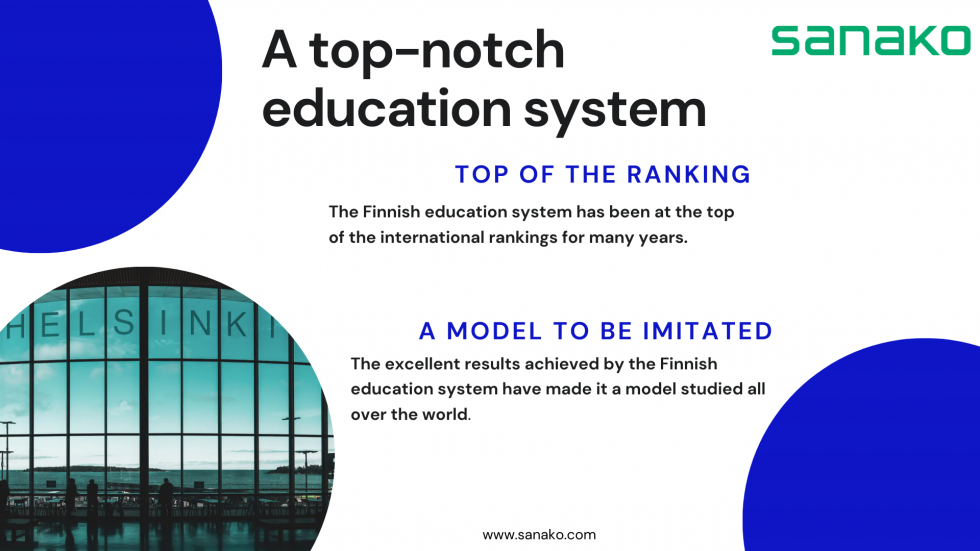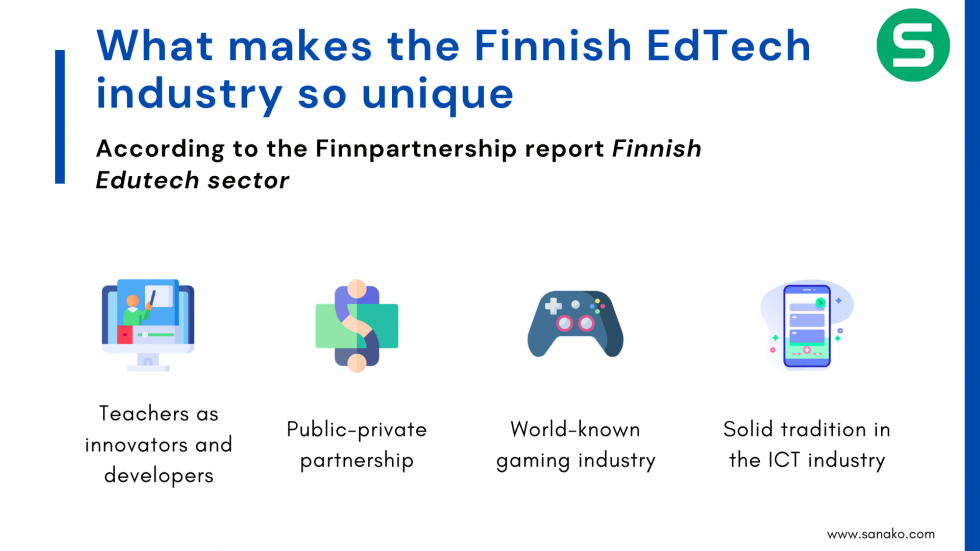Recently HolonIQ, a leading education market intelligence platform, published a list of the 50 most innovative Educational Technology (EdTech) companies from across the Nordic-Baltic region.
As it seems, Finland ranked as the country with the most companies on the list – with 14 companies out of 50! This news is just a further confirmation of the vitality and quality of the Finnish EdTech market. Therefore, in this article we want to give you a brief overview of the reality of the EdTech sector in Finland, explaining what makes it excellent and its possible growth opportunities.
Understanding the picture of educational technology in Finland
When we analyze the EdTech market we can identify global and regional trends. As for the global dimension, the available data shows that we are dealing with an industry that in the last year has experienced a sort of golden age.
Certainly, the contingencies dictated by the COVID-19 pandemic have given a strong impulse to the online education sector, with schools that have had to heavily rely on technology to continue their educational activities.
The forecasts for the growth of this particular sector, therefore, looks good. As it has been noted:
The global EdTech market size was estimated to be valued at USD 74.2 billion in 2021 and is expected to expand at a compound annual growth rate (CAGR) of 14.5% from 2021 to 2031, totalling over USD 288.4 billion by the end of 2031.
On the other hand, when it comes to the regional dimension, we cannot help but stress the fact that the Nordic-Baltic region is one of the most active and advanced regions in the whole world in developing EdTech solutions.
Overall, across the Scandinavian peninsula, the EdTech scene is experiencing a dynamic expansion. In fact, the Nordic countries have invested heavily in education technology.
The result of these investments has been the emergence of a very solid, regional business community. According to Silicon Vikings data, already in 2018 this community counted 323 technology startups within its ranks. This number has increased dramatically since.
The factors that make such small countries so competitive internationally in this industry are several. Among the most important, as it has been noted in this excellent overview of the Nordic education technology industry by Ashmeet Singh, there is an established pedagogical tradition focused on the emotional and cognitive development of students at all stages of the educational process.
However, another crucial factor is the ability to merge pedagogy and technology. As Singh argues, one of the factors behind the Nordic countries’ success in the EdTech sector is indeed to be found in:
Their openness towards technology in education. Schools are embracing technology to empower students and develop social-emotional skills. Education in countries like Finland, Sweden, Denmark and Norway is about fun and collaboration and not on “getting the best grades”.
In this regard, the Finnish EdTech industry has simply assimilated and developed two key concepts of the national school system, that is a solid tradition in pedagogical research and the constant experimentation in educational methods, with a particular taste for creative methods to integrate learning and technology.
The future of education is the present in Finland
The Fulbright scholar William Doyle, after having served as a lecturer on Media and Education at the University of Eastern Finland, was impressed by the efficacy of the Finnish school system. As he later wrote in a Washington Post article:
“I have seen the school of tomorrow. It is here today, in Finland.”
Doyle’s statement is a personal testimony that reflects the analysis and rankings of the world’s best education systems. In fact over the years the Finnish education system has climbed the international rankings, settling among the best education systems in the world.
Its competitiveness has remained steady during the years. For instance, in 2016-2017 the World Economic Forum ranked Finland’s primary school system as the number 1 in the world, out of 138 countries. Between 2018 and 2019, Finland was ranked 11th in the World Economic Forum ranking, out of a total of 141 countries.
Having established itself as a world-leading nation in education, Finland has become the object of international education professionals’ interest. As a matter of fact, a quick search on the Internet will show you a copious amount of articles like “Why is the Finnish school system so good?”.
In this context we want to try to provide a simple but comprehensive answer to this question. In general, we can consider the following elements as determining factors for the effectiveness of education provided at all school levels in Finland:
- An individualised student-centered approach
- Data-driven education policies
- Cyclical, research-based updating of the national education policies
- Assignment of a high degree of autonomy and responsibility to teachers, who are highly qualified education professionals
- A strong focus on the development of learning environments and the digitalization of school institutions.
A thriving EdTech sector
The Finnish education technology industry has succeeded in developing a system capable of providing educational products based on the highest pedagogical rigor and first-class technological know-how.
The Finnish EdTech companies have been able to take advantage of the best practices identified in the national school system, as well as a socio-economic context characterized by the fruitful collaboration between the public, private and research sectors.
The interaction between public and private has given a significant boost to the development of one of the most solid EdTech landscapes in Europe. In fact, as it has been noted:
The key to the Finnish success story is the importance of Public-Private Partnership in EdTech Innovation. The Finnish EdTech ecosystem is quite vocal on how governments, educators, and innovators can build meaningful products together. The 5 biggest cities in Finland are currently setting up a structure where cities and schools become Innovation platforms for new EdTech development
As of 2023, there were approximately 300 EdTech startup in Finland. As a further testament of the industry’s vitality, many of them have managed to attract funds coming both from national and foreign investors.
The explosion of the COVID-19 pandemic has been a test case for the resilience of this sector. In this predicament, Finnish companies have shown the ability to cope with a moment of crisis, pooling their resources and offering effective digital learning solutions worldwide.
Where Sanako stands
Sanako is particularly proud to be part of this environment dedicated to the promotion of education and technological experimentation.
“We started in 1961 in providing solutions for foreign language learning and we intend to go on for quite some time, especially at a time when there is a need to help people communicate and understand realities different from their own. We are committed to combine the pedagogical preparation of the Finnish school system with innovative digital solutions in order to improve and spread language learning.”
Discover more interesting ideas and best practices used in the Finnish education system from our earlier post: Foreign language teaching in Finland’s world-leading education system.
This blog post was last updated 30 June, 2023.


